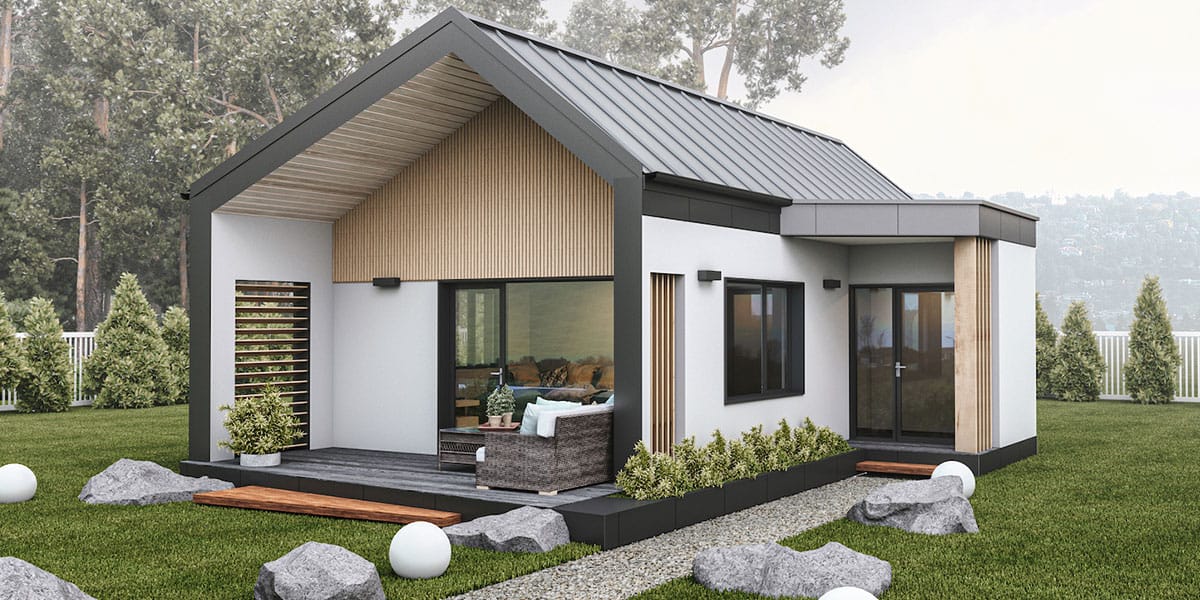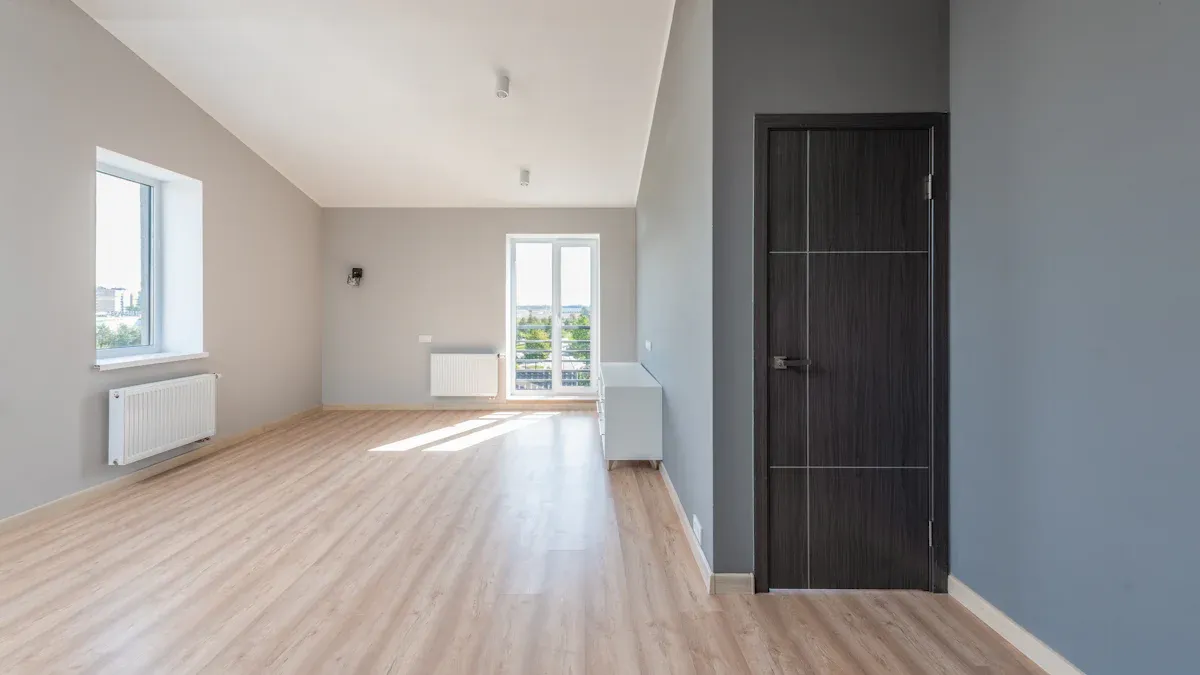
02 Apr Modular House Subfloor Tips with MgO Boards
Table of Contents
Magnesium Oxide (MgO) boards are great for modular house floors. They are very strong and can handle up to 14 MPa. These boards resist water, stopping mold and mildew from growing. They do not burn, which makes them safer in fires. MgO boards are made from recyclable materials, helping the environment. This makes them a top choice for modular homes.
Key Takeaways
MgO boards are tough, waterproof, and fireproof, perfect for house floors.
Installing and caring for MgO boards well makes them last longer.
MgO boards help the environment since they are recyclable and need less energy to make.
Benefits of MgO Boards for Modular House Subfloors
Durability and Load-Bearing Capacity
MgO boards are very strong and last a long time. They stay sturdy even when holding heavy weights. These boards work well in different weather, like heat or humidity. Tests show they may absorb less water and lose some strength over time. However, they still stay reliable and strong. MgO boards are a great choice for stable modular house floors.
Moisture Resistance and Mold Prevention
Water can ruin regular subfloor materials, but not MgO boards. They don’t soak up water, so they stay solid in wet areas. Their special makeup stops mold, mildew, and fungi from growing. Some MgO boards even fight germs, adding extra safety. Choosing MgO boards helps avoid water damage and keeps your floors strong and safe.
Fire Resistance for Enhanced Safety
Fire safety is important, and MgO boards are great for this. They meet strict fire safety rules and can handle very high heat. Tests show they don’t burn or change color at 750°C (1,382°F). These boards have the best fire rating, giving top protection. Adding MgO boards to your floors makes your home safer.
Eco-Friendly and Sustainable Construction
MgO boards are good for the environment. They are made from natural materials and can be recycled. Making MgO boards uses less energy and creates less pollution than cement. They also produce little waste and need fewer resources. Using MgO boards helps the planet and gives you strong, eco-friendly floors.
Installation Tips for MgO Subfloors in Modular Houses

Getting the Subfloor Ready
Prepare well for easy installation. Keep the room’s temperature and humidity steady before, during, and after installing. This stops the MgO boards from bending or expanding. Make sure the subfloor is clean, dry, and flat. Clear away dirt or bumps that might cause problems. Leave a small gap of 1/6″ to 1/8″ between boards for natural movement. Fill these gaps with Manus-Bond 75-AM, then use a sandable joint compound for a smooth finish.
Cutting and Fitting MgO Boards
Cutting and fitting must be done carefully. Use a carbide-tipped scoring knife or a power saw with a carbide blade for clean cuts. Wear a dust mask and safety glasses to stay safe. When placing the boards, stagger them and leave a 1/16” gap for steel framing or a 1/8” gap for wood. This keeps the boards stable and stops them from buckling.
Attaching MgO Boards to the Subfloor
Attach the boards with 316-stainless steel or ceramic-coated fasteners. These materials don’t rust and keep the boards secure. Press evenly when fastening to avoid cracks. For extra strength, use 6″-wide fiberglass tape with RapidSet “Wunderfixx” on the seams. Spread it out 12-18″ on both sides for a neat finish.
Checking Alignment and Leveling
Make sure the boards are even and aligned. Use a spirit level to check after installing. Fix any uneven spots to make the surface flat. Add a final layer of finishing compound, spreading it 18-24″ for a smooth look. This step gets your subfloor ready for the next building stage.
Overcoming Common Challenges with MgO Subfloors
Handling and Transporting MgO Boards Safely
MgO boards are strong but need gentle handling to stay intact. Always carry them standing up to stop bending or breaking. Wear gloves to protect your hands from sharp edges. When moving them, stack the boards flat on a steady surface. Use straps to keep them from sliding during transport. If storing before use, place them in a dry, covered spot to keep them safe from water.
Tip: Use a cart or dolly to move many boards together. This makes it easier and safer for you.
Ensuring Compatibility with Other Materials
MgO boards match well with many materials, but check first. For example, adhesives and sealants must stick well to MgO surfaces. Test a small spot before using them on the whole subfloor. When using MgO boards with wood or steel frames, leave small gaps. These gaps let the boards move naturally and stay strong.
Avoiding Common Installation Errors
Mistakes during setup can weaken the subfloor. Don’t tighten screws too much, as this can break the boards. Seal all seams properly to block water from getting through. Follow the maker’s rules for spacing and fastening. Skipping these steps can cause uneven floors or weaker support.
Managing Expansion and Contraction Issues
MgO boards change size slightly with heat and humidity. To handle this, leave tiny gaps between boards when installing. These gaps let the boards move without bending or cracking. Use flexible sealants to fill the gaps for a smooth, strong finish.
Note: Keeping indoor conditions steady during and after setup helps reduce size changes.
Maintenance Tips for Long-Lasting MgO Subfloors
Cleaning and Routine Maintenance
Keep your MgO subfloors clean to make them last longer. Sweep or vacuum often to remove dirt and dust. For deeper cleaning, use a damp mop with gentle cleaner. Do not soak the floor, as too much water can harm sealants. Clean up spills right away to avoid stains or damage.
Tip: Try new cleaners on a small hidden spot first. This helps prevent any unwanted reactions.
Inspecting for Damage or Wear
Check your floors often to find problems early. Look for cracks, chips, or uneven spots on the surface. Pay close attention to seams and edges, as they wear out faster. Fix any damage quickly to stop it from getting worse.
Note: Inspect every few months or after heavy use to keep your subfloors in great condition.
Repairing or Replacing Damaged Sections
Fix damage fast to keep your subfloor strong. Fill small cracks or chips with flexible sealant or joint compound. For bigger problems, replace the damaged board. Remove the broken piece and fit a new MgO board in its place. Make sure the new board lines up with the others for a smooth finish.
Prolonging the Lifespan of MgO Subfloors
To make your MgO subfloors last longer, control indoor conditions. Keep temperature and humidity steady to reduce size changes. Use pads under heavy furniture to stop dents or scratches. Avoid dragging sharp or heavy items across the floor.
Reminder: Following these tips keeps your MgO subfloors strong and reliable for years, making them a smart choice for your modular house.
MgO boards are strong, water-resistant, fire-safe, and eco-friendly. Installing them correctly and maintaining them keeps them lasting longer. Picking MgO boards means choosing a dependable and green subfloor option. They make your modular house safer and sturdier.
FAQ
What tools are needed to cut MgO boards?
Use a carbide scoring knife or a power saw with a carbide blade. Always wear gloves, a dust mask, and safety glasses for protection.
Tip: Keep a vacuum close to reduce dust while cutting.
Can MgO boards hold heavy furniture?
Yes, MgO boards are strong and can hold heavy furniture. They won’t bend or crack if installed properly.
How can you stop water damage to MgO subfloors?
Seal seams with flexible sealants and install them the right way. Clean up spills quickly to keep water from soaking in.
Reminder: Check your floors often to spot water problems early.
